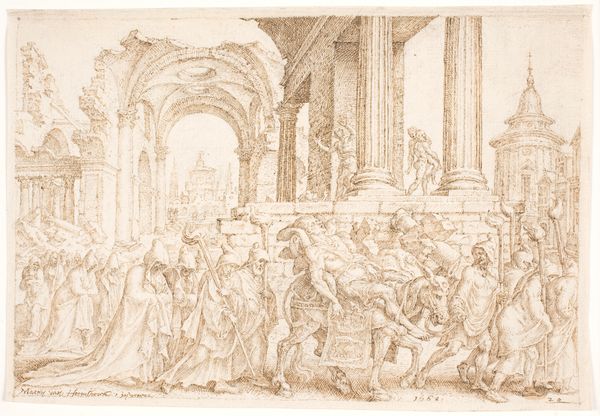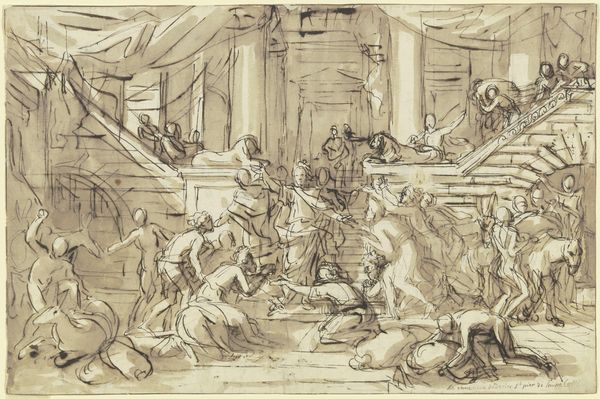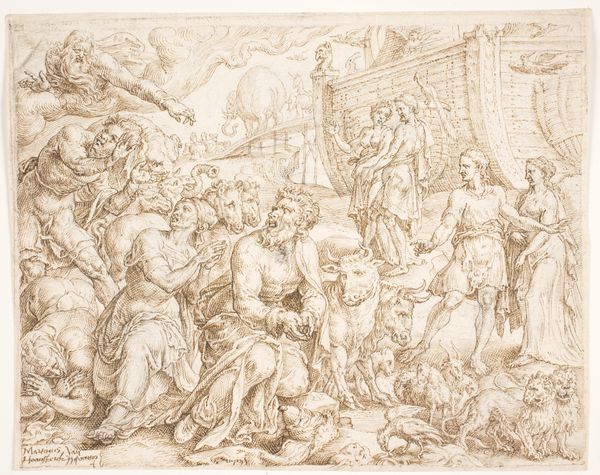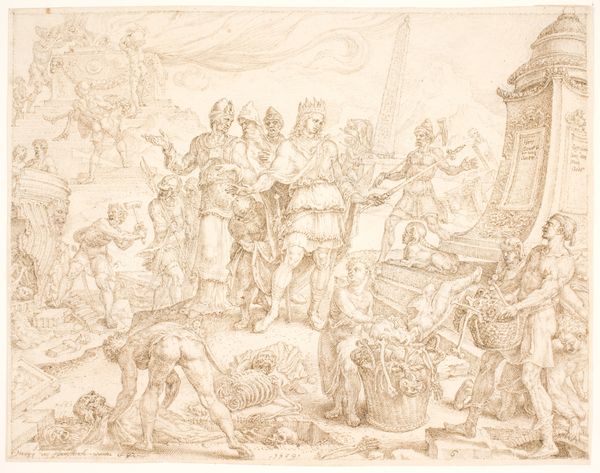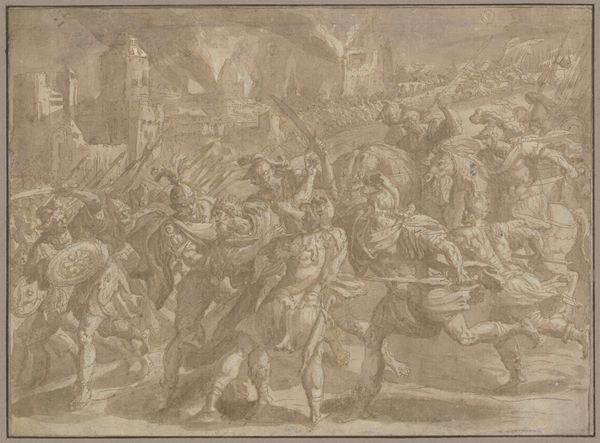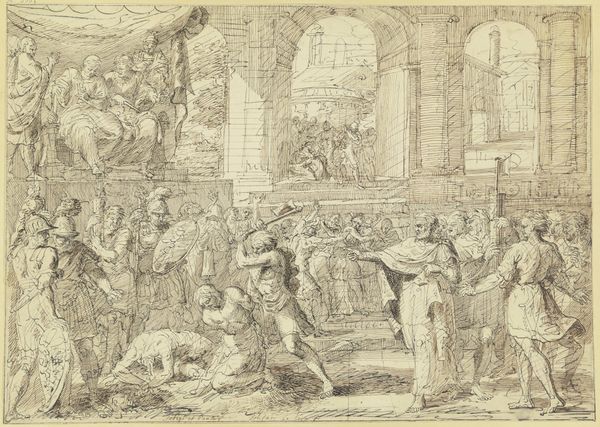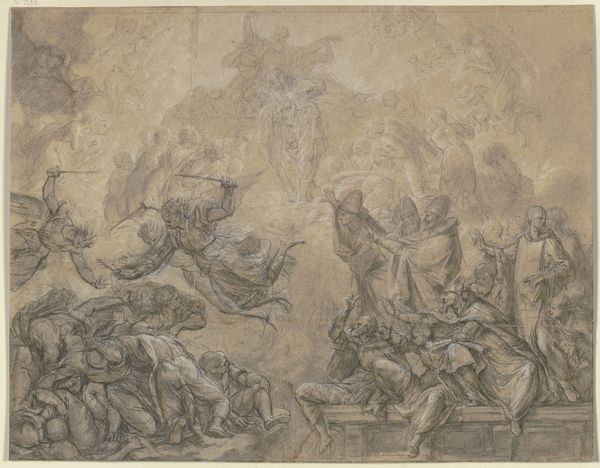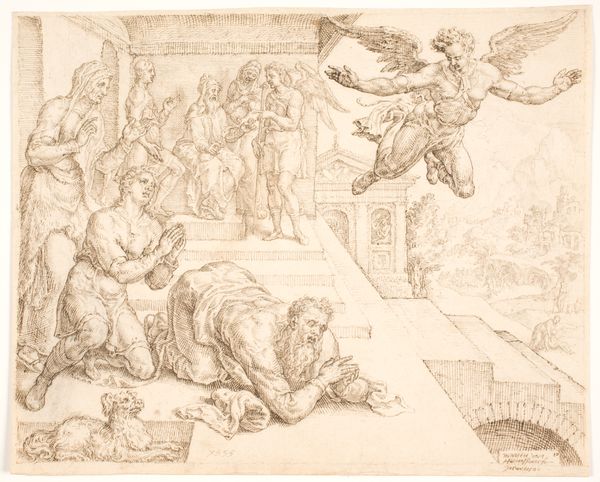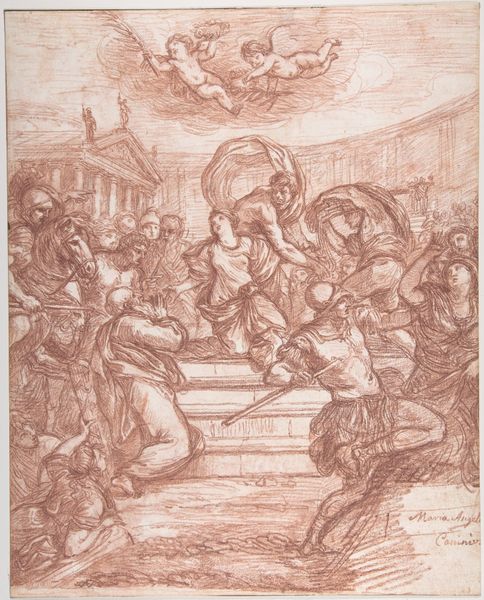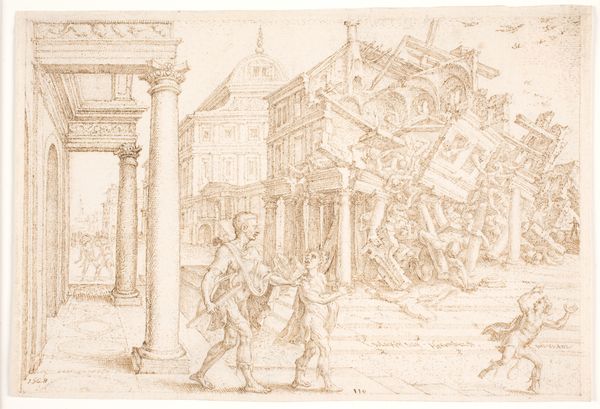
drawing, etching
#
drawing
#
narrative-art
#
etching
#
etching
#
mannerism
#
figuration
#
history-painting
Dimensions: 144 mm (height) x 212 mm (width) (bladmaal)
Editor: This etching, "Jehu \u00d8del\u00e6gger Ba'alshuset" by Maarten van Heemskerck, made in 1568, feels incredibly dramatic. It's such a busy composition, all these figures crammed together, but with a clear focus on the destruction in the foreground. How do you interpret this work? Curator: The destruction, the active dismantling of the Ba'alshuset, is not just an act of iconoclasm, it is also an act of cultural disruption. Consider the historical context: 1568 was a turbulent period, especially in the Netherlands with rising religious tensions. Heemskerck, drawing on a biblical narrative, is possibly reflecting the iconoclastic fervour of the Reformation. The "correct" belief or way of worshipping may be influenced by gender, race or even geographical location. Can you identify these influences as it relates to your beliefs today? Editor: So, it's less about the specific religious figures and more about a broader questioning of authority? It is the artist advocating for reformation within beliefs and the culture surrounding that particular belief system. Curator: Precisely! It speaks to the power dynamics inherent in religious representation and the potential for resistance against established norms. What does it mean when a society chooses to destroy its idols? Who benefits and who is silenced in that process? The destruction of "other people's beliefs" are, however, a slippery slope. We need to challenge assumptions. What can one side do to come together without inciting chaos, but promote social harmony and inclusivity? Editor: It's fascinating to think about it that way – as a form of cultural and potentially a kind of social commentary on reformations as disruptions that are almost intrinsically harmful, at least at first glance. Thanks for opening up that perspective! Curator: And thank you for pointing out the initial dramatic impression. It reminds us that art first engages us emotionally, then intellectually. Perhaps Heemskerck wanted to evoke that very feeling of disruption to force a moment of questioning in his viewers.
Comments
No comments
Be the first to comment and join the conversation on the ultimate creative platform.
